126. Black Kite Milvus migrans (Swartwou)
Order: Accipitriformes. Family: Accipitridae
Description
Size 51-60 cm. The upper plumage is brown but the head and neck tend to be paler. The patch behind the eye appears darker. The outer flight feathers are black and the feathers have dark cross bars and are mottled at the base. The lower parts of the body are pale brown, becoming lighter towards the chin. The body feathers have dark shafts giving it a streaked appearance. The cere and gape are yellow, but the bill is black. The legs are yellow and the claws are black. The sexes are alike.
Juvenile has buffy feather margins.
Similar species: Differs from similarly sized Steppe Buzzard by longer, forked tail and narrower wings which are more acutely angled backwards in flight. African Marsh-Harrier has a longer, square-ended tail and flies with the wings canted up; Black Kite has floppy flight action and twists its long tail for steering. It differs from Yellow-billed Kite in having a black bill (but a yellowish cere), a paler, greyer head and a less deeply forked tail.
Distribution
It breeds across much of Eurasia, heading south in the non-breeding season to Madagascar and sub-Saharan Africa. In southern Africa it occurs in patches of Namibia, northern Botswana and South Africa,
Habitat
Diverse; from forest edge to savanna and semi-desert, generally preferring woodland habitats. Often found in flocks at termite emergences.
Movements and migrations
Palearctic breeding migrant, arriving in southern Africa at the start of the rains in October or November. It leaves just before the end of the rainy season, in March.
Diet
It eats a wide variety of animals, typically searching for prey aerially; it uses the style of flight characteristic of kites, as it swivels its tail horizontally to steer accurately. Once it spots something, it rapidly swoops to the ground to catch the prey item.
Breeding
The nests are built on tree branches, cliff ledges, pylons or buildings and are made from sticks and twigs lined with softer material, often comprised of rags and plastic. The typical clutch size is two to three eggs which are incubated by the female for around a month before hatching. The young fledge after 42-56 days and become independent another 15 to 50 days later.
Call
A high-pitched, shrill whinnying call.
Listen to Bird Call: http://www.xeno-canto.org/species/Milvus-migrans
Status
Locally common non-breeding summer visitor.
Africa Wild Bird Book
- nan
- Posts: 26447
- Joined: Thu May 31, 2012 9:41 pm
- Country: Switzerland
- Location: Central Europe
- Contact:
Black Kite Photos
126. Black Kite Milvus migrans (Swartwou)
 © nan
© nan
Kgalagadi Transfrontier Park
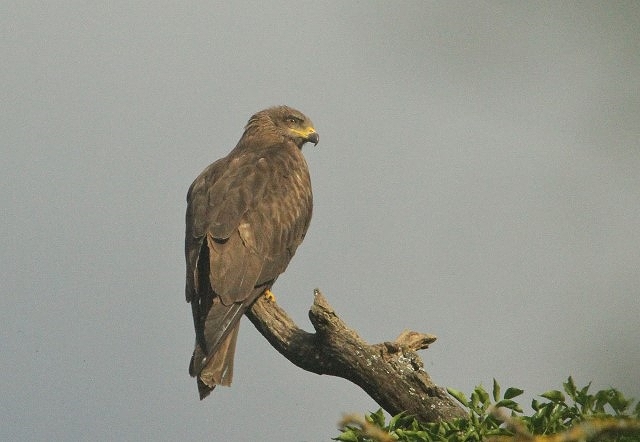 © nan
© nan
Switzerland
 © Dewi
© Dewi
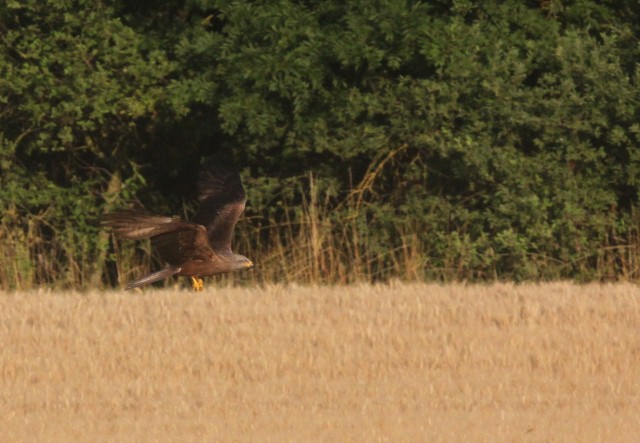
Links:
Sabap2
Global Raptor Information Network
ARKive: http://www.arkive.org/black-kite/milvus-migrans/
Animal Diversity Web
Oiseaux net: http://www.oiseaux-birds.com/article-black-kite.html
 © nan
© nanKgalagadi Transfrontier Park
 © nan
© nanSwitzerland
 © Dewi
© Dewi
Links:
Sabap2
Global Raptor Information Network
ARKive: http://www.arkive.org/black-kite/milvus-migrans/
Animal Diversity Web
Oiseaux net: http://www.oiseaux-birds.com/article-black-kite.html
Kgalagadi lover… for ever
https://safrounet.piwigo.com/
https://safrounet.piwigo.com/
- Sprocky
- Posts: 7110
- Joined: Sat May 19, 2012 12:29 pm
- Country: South Africa
- Location: Grietjie Private Reserve
- Contact:
Yellow-billed Kite
126b. Yellow-billed Kite Milvus aegyptius
Accipitriformes. Family: Accipitridae
Until recently regarded as a subspecies of Black Kite (an uncommon non-breeding Palearctic migrant).
Description
55 cm in length. The plumage is brown overall and it has a distinctive yellow bill, which, together with the deeply forked tail, is diagnostic. The unfeathered legs and the feet are yellow and the eyes are brown.
The sexes are alike in plumage, but the female is larger.
Immature has a black bill (only the cere is yellow). Eyes dark, blackish facial mask and pale streaks on head and underparts.
Distribution
Across sub-Saharan Africa; in southern Africa it is common across much of the region, largely excluding the Karoo, Kahalari and Namib Desert.
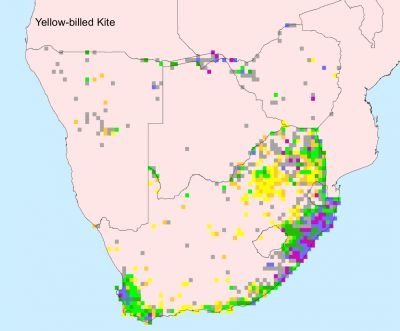
Habitat
Almost all habitats including parks in urban areas.
Movements and migrations
Intra-African breeding migrant, arriving in southern Africa from August-October and departing in March.
Diet
Wide range of small vertebrates and insects. The Yellow-billed Kite relies on termites as a major food source.
Breeding
Monogamous, territorial solitary nester. The nest is built by both sexes, consisting of a bowl-shaped platform of sticks which is lined with a variety of materials. It is typically placed on the main stem in the canopy of a large tree. Egg-laying season is from August-December, peaking from September to October. The female lays 1-3 white eggs that are marked with brown. Eggs are mainly incubated by the female for about 37-38 days; the male may take over so that the female can go out to forage. The chicks are brooded constantly by the female for the first 5-6 days, while the male provides all the food. When they become about a month old the female helps him provide food for their young, who leave the nest to clamber around the branches of the tree at about 40 days old, taking their first flight a few days later.
Call
Usually silent, utters a plaintive kleeeeu-errrr or kleeeu-ki-ki. during the breeding season. Listen to Bird Call.
Status
Widespread. Common summer visitor and resident. Mostly an intra-African breeding migrant, present Jul-Mar (some as late as May). Additional non-breeding intra-African migrants present December-April.
Accipitriformes. Family: Accipitridae
Until recently regarded as a subspecies of Black Kite (an uncommon non-breeding Palearctic migrant).
Description
55 cm in length. The plumage is brown overall and it has a distinctive yellow bill, which, together with the deeply forked tail, is diagnostic. The unfeathered legs and the feet are yellow and the eyes are brown.
The sexes are alike in plumage, but the female is larger.
Immature has a black bill (only the cere is yellow). Eyes dark, blackish facial mask and pale streaks on head and underparts.
Distribution
Across sub-Saharan Africa; in southern Africa it is common across much of the region, largely excluding the Karoo, Kahalari and Namib Desert.

Habitat
Almost all habitats including parks in urban areas.
Movements and migrations
Intra-African breeding migrant, arriving in southern Africa from August-October and departing in March.
Diet
Wide range of small vertebrates and insects. The Yellow-billed Kite relies on termites as a major food source.
Breeding
Monogamous, territorial solitary nester. The nest is built by both sexes, consisting of a bowl-shaped platform of sticks which is lined with a variety of materials. It is typically placed on the main stem in the canopy of a large tree. Egg-laying season is from August-December, peaking from September to October. The female lays 1-3 white eggs that are marked with brown. Eggs are mainly incubated by the female for about 37-38 days; the male may take over so that the female can go out to forage. The chicks are brooded constantly by the female for the first 5-6 days, while the male provides all the food. When they become about a month old the female helps him provide food for their young, who leave the nest to clamber around the branches of the tree at about 40 days old, taking their first flight a few days later.
Call
Usually silent, utters a plaintive kleeeeu-errrr or kleeeu-ki-ki. during the breeding season. Listen to Bird Call.
Status
Widespread. Common summer visitor and resident. Mostly an intra-African breeding migrant, present Jul-Mar (some as late as May). Additional non-breeding intra-African migrants present December-April.
Sometimes it’s not until you don’t see what you want to see, that you truly open your eyes.
- Sprocky
- Posts: 7110
- Joined: Sat May 19, 2012 12:29 pm
- Country: South Africa
- Location: Grietjie Private Reserve
- Contact:
Yellow-billed Kite Photos
126b. Yellow-billed Kite Milvus aegyptius
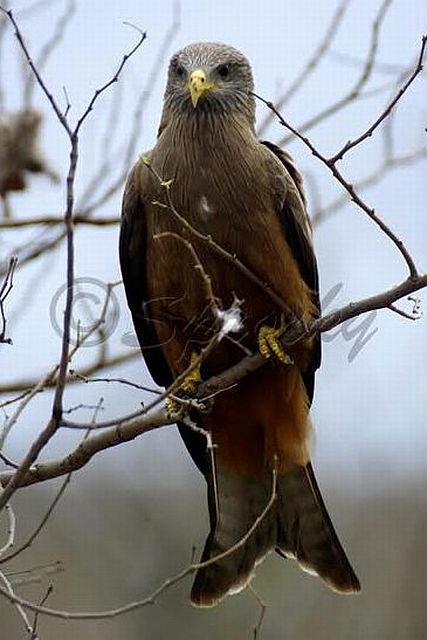
 © Super Mongoose
© Super Mongoose
Kruger National Park, Tshokwane
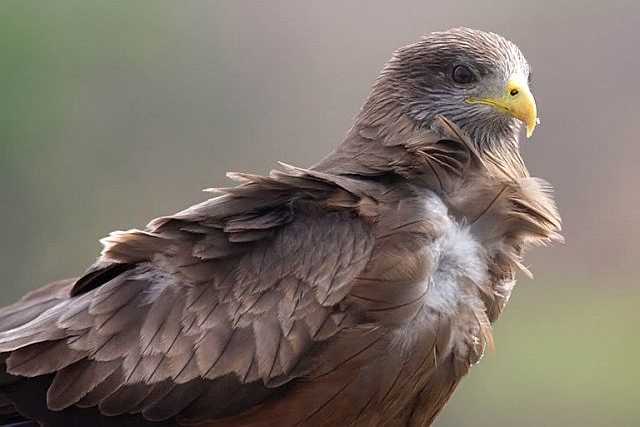 © leachy
© leachy
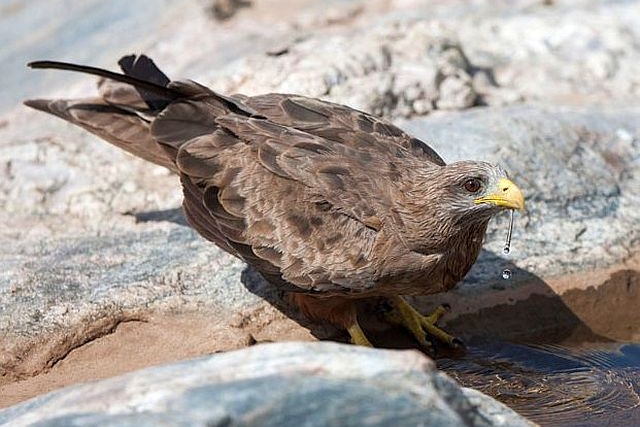 © Pumbaa
© Pumbaa
 © Flutterby
© Flutterby
 © Michele Nel
© Michele Nel
Juvenile
 © BluTuna
© BluTuna
Juvenile, Northern Farm, Johannesburg
Links:
Sabap2
Global Raptor Information Network

 © Super Mongoose
© Super MongooseKruger National Park, Tshokwane
 © leachy
© leachy © Pumbaa
© Pumbaa © Flutterby
© Flutterby © Michele Nel
© Michele NelJuvenile
 © BluTuna
© BluTunaJuvenile, Northern Farm, Johannesburg
Links:
Sabap2
Global Raptor Information Network
Sometimes it’s not until you don’t see what you want to see, that you truly open your eyes.
- Bushveld Jock
- Posts: 2001
- Joined: Sat Jun 02, 2012 3:52 pm
- Contact:
African Fish-eagle
148. African Fish-eagle Haliaeetus vocifer (Visarend)
ORDER ACCIPITRIFORMES. Family: Accipitridae
Description
A large broad-winged eagle with short tail. Adult has unmistakable black and chestnut plumage with a white head, breast and tail and black wings. The featherless face is yellow. The hook-shaped beak is yellow with a black tip. Dark brown eyes distinguish it at all ages from Osprey. The feet are yellowish in color and have spiky growths on the bottom that help to grip prey, called spiricules.
Juvenile is dark-brown with scruffy white patches on head, belly, underwing, coverts, and primary bases; it has a black eyeline. tail is longer than adults, white with brown tip. The eyes are paler compared to the adult. Head and breast gradually whitened with age, taking 4-5 years to acquire adults plumage and the dark streaks that form on the breast are the last of the juvenile plumage to disappear.
Distribution
Across sub-Saharan Africa; in southern Africa it is locally common in much of the region, excluding the arid Namib Desert, Kalahari and much of the Karoo.
Habitat
It generally favours large water bodies, large rivers, lakes, estuaries, lagoons, dams.
Diet
The African Fish Eagle feeds mainly on fish, swooping down to the water surface to grab a fish with its talons; it may even catch fish straight from the waves of the sea! Fish that weigh under about 2 kg are lifted out of the water and carried to a perch to be eaten, but if the fish is larger than 3 kg, the fish-eagle drags to the shore using its wings as paddles. It is an opportunistic feeder and may take a wider variety of prey such as water-birds, reptiles and carrion. They may also raid colonies of nesting waterbirds for young and eggs.
Breeding
Monogamous, territorial solitary nester. Winter is the breeding season in southern Africa. African Fish Eagles are believed to mate for life, performing a courtship display in which the male repeatedly dives at the female, who presents her talons. A breeding pair mates almost daily. The nest is mainly built by the female in roughly two months. It is a a large platform of sticks or Papyrus (Cyperus papyrus), lined with grass, papyrus heads, other aquatic plants and occasionally weaver nests. Due to the considerable effort required to build the nest, the same structure is often reused over multiple breeding seasons, although a breeding pair may have multiple nests, alternating between them each year. It is typically placed on a cliff ledge or at the top of a tall tree, usually less than 100 metres from water. Egg-laying season is from April-August, peaking from May-June. The clutch size is 1-3, exceptionally 4, usually 2. Eggs are primarily white with a few reddish speckles. They are laid at intervals of 2-3 days, with incubation, by both parents in turn, beginning as soon as the first is laid. Eggs are mainly incubated by the female for about 42-45 days, while the male may take over for an hour or two so that she can hunt. The chicks are brooded for much of the nestling period; the older chick often ruthlessly attacks the younger bird and prevents it from getting food, even if there is plenty of food to go around. The parents ignore this behaviour, and by seven weeks the competition for food between siblings intensifies, although they are less aggressive to each other. The younger chick either dies or grows to be a lot weaker than its siblings, in fact 2-3 chicks often survive to fledge at 70-75 days old. They become fully independent after another two months or so.
Call
Its distinctive cry has become synonymous with the sound of Africa. It has two distinct calls - in flight or perched, the sound is a ringing kyow-kow-kow with head thrown back. Also a heee-ah, heeah-heeah. When near the nest, its call is more of a quock sound - the female is a little shriller and less mellow than the male. Listen to Bird Call.
Status
Locally common resident, largely sedentary. Not threatened globally, but Near-threatened in Namibia due its small population there.
ORDER ACCIPITRIFORMES. Family: Accipitridae
Description
A large broad-winged eagle with short tail. Adult has unmistakable black and chestnut plumage with a white head, breast and tail and black wings. The featherless face is yellow. The hook-shaped beak is yellow with a black tip. Dark brown eyes distinguish it at all ages from Osprey. The feet are yellowish in color and have spiky growths on the bottom that help to grip prey, called spiricules.
Juvenile is dark-brown with scruffy white patches on head, belly, underwing, coverts, and primary bases; it has a black eyeline. tail is longer than adults, white with brown tip. The eyes are paler compared to the adult. Head and breast gradually whitened with age, taking 4-5 years to acquire adults plumage and the dark streaks that form on the breast are the last of the juvenile plumage to disappear.
Distribution
Across sub-Saharan Africa; in southern Africa it is locally common in much of the region, excluding the arid Namib Desert, Kalahari and much of the Karoo.
Habitat
It generally favours large water bodies, large rivers, lakes, estuaries, lagoons, dams.
Diet
The African Fish Eagle feeds mainly on fish, swooping down to the water surface to grab a fish with its talons; it may even catch fish straight from the waves of the sea! Fish that weigh under about 2 kg are lifted out of the water and carried to a perch to be eaten, but if the fish is larger than 3 kg, the fish-eagle drags to the shore using its wings as paddles. It is an opportunistic feeder and may take a wider variety of prey such as water-birds, reptiles and carrion. They may also raid colonies of nesting waterbirds for young and eggs.
Breeding
Monogamous, territorial solitary nester. Winter is the breeding season in southern Africa. African Fish Eagles are believed to mate for life, performing a courtship display in which the male repeatedly dives at the female, who presents her talons. A breeding pair mates almost daily. The nest is mainly built by the female in roughly two months. It is a a large platform of sticks or Papyrus (Cyperus papyrus), lined with grass, papyrus heads, other aquatic plants and occasionally weaver nests. Due to the considerable effort required to build the nest, the same structure is often reused over multiple breeding seasons, although a breeding pair may have multiple nests, alternating between them each year. It is typically placed on a cliff ledge or at the top of a tall tree, usually less than 100 metres from water. Egg-laying season is from April-August, peaking from May-June. The clutch size is 1-3, exceptionally 4, usually 2. Eggs are primarily white with a few reddish speckles. They are laid at intervals of 2-3 days, with incubation, by both parents in turn, beginning as soon as the first is laid. Eggs are mainly incubated by the female for about 42-45 days, while the male may take over for an hour or two so that she can hunt. The chicks are brooded for much of the nestling period; the older chick often ruthlessly attacks the younger bird and prevents it from getting food, even if there is plenty of food to go around. The parents ignore this behaviour, and by seven weeks the competition for food between siblings intensifies, although they are less aggressive to each other. The younger chick either dies or grows to be a lot weaker than its siblings, in fact 2-3 chicks often survive to fledge at 70-75 days old. They become fully independent after another two months or so.
Call
Its distinctive cry has become synonymous with the sound of Africa. It has two distinct calls - in flight or perched, the sound is a ringing kyow-kow-kow with head thrown back. Also a heee-ah, heeah-heeah. When near the nest, its call is more of a quock sound - the female is a little shriller and less mellow than the male. Listen to Bird Call.
Status
Locally common resident, largely sedentary. Not threatened globally, but Near-threatened in Namibia due its small population there.
Kgalagadi: Dec 2015
KNP Maroela, Shingwedzi & Pretoriuskop: March 2016
KNP Maroela, Shingwedzi & Pretoriuskop: March 2016
- Bushveld Jock
- Posts: 2001
- Joined: Sat Jun 02, 2012 3:52 pm
- Contact:
African Fish-eagle Photos
148. African Fish-eagle Haliaeetus vocifer (Visarend)
The African Fish Eagle is the national bird of Namibia, Zambia, and Zimbabwe.
 © leachy
© leachy
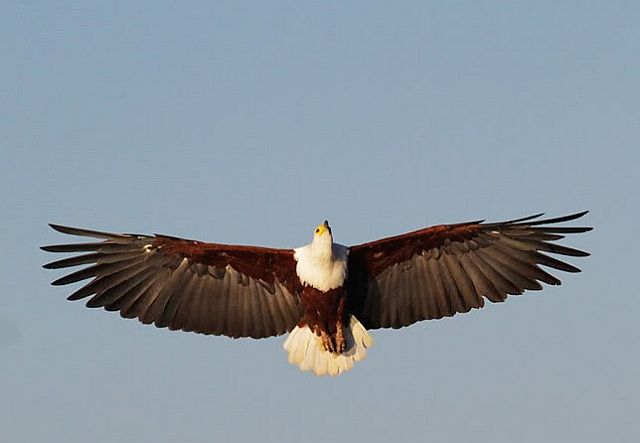 © leachy
© leachy
 © leachy
© leachy

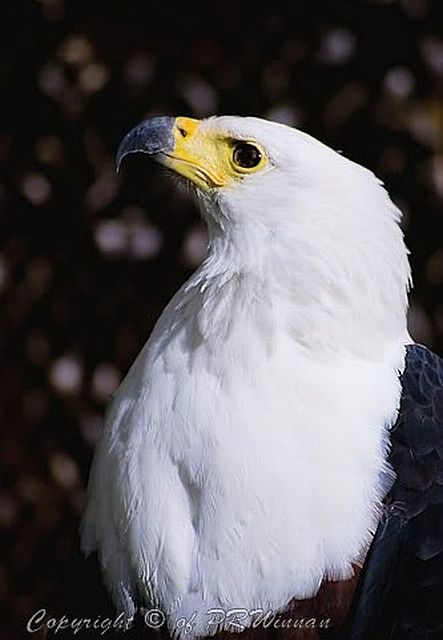
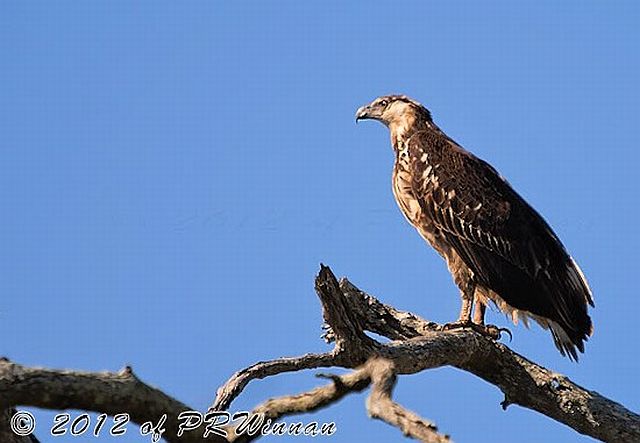
Juvenile
 Juvenile © Dewi
Juvenile © Dewi
 © Flutterby
© Flutterby
Juvenile
 © steamtrainfan
© steamtrainfan
Juvenile
 © Bushcraft
© Bushcraft
Name
Haliaeetus comes from the Greek word 'hals' for "sea" or "salt" and 'aetos' which means "eagle". Vocifer comes from the Latin word 'vocifero', which means "cry aloud".
Links:
http://sabap2.adu.org.za/docs/sabap1/148.pdf
http://sabap2.adu.org.za/spp_summary.ph ... §ion=3
http://www.robertsonline.co.za/bird/33440/33440-1.asp
Sasol Birds of Prey of Africa
http://www.globalraptors.org/grin/Speci ... pecID=8275
http://www.oiseaux-birds.com/card-afric ... eagle.html
Newman's birds of Southern Africa
http://www.biodiversityexplorer.org/bir ... ocifer.htm
The African Fish Eagle is the national bird of Namibia, Zambia, and Zimbabwe.
 © leachy
© leachy © leachy
© leachy © leachy
© leachy


Juvenile
 Juvenile © Dewi
Juvenile © Dewi © Flutterby
© FlutterbyJuvenile
 © steamtrainfan
© steamtrainfanJuvenile
 © Bushcraft
© BushcraftName
Haliaeetus comes from the Greek word 'hals' for "sea" or "salt" and 'aetos' which means "eagle". Vocifer comes from the Latin word 'vocifero', which means "cry aloud".
Links:
http://sabap2.adu.org.za/docs/sabap1/148.pdf
http://sabap2.adu.org.za/spp_summary.ph ... §ion=3
http://www.robertsonline.co.za/bird/33440/33440-1.asp
Sasol Birds of Prey of Africa
http://www.globalraptors.org/grin/Speci ... pecID=8275
http://www.oiseaux-birds.com/card-afric ... eagle.html
Newman's birds of Southern Africa
http://www.biodiversityexplorer.org/bir ... ocifer.htm
Kgalagadi: Dec 2015
KNP Maroela, Shingwedzi & Pretoriuskop: March 2016
KNP Maroela, Shingwedzi & Pretoriuskop: March 2016
African Wild Green Eagle
1001. African Wild Green Eagle Conservus faunacanus Groot groot groen arend (although Levaillant and RP reckon it should be called something else).
Description
Un-bloodymistakeable!
Distribution
Widespread in suitable habitat (refer below).
Habitat
Only seen from braai's and stoeps following consumption of certain drinks.
Status
Uncertain due to lack of credible observers.
Description
Un-bloodymistakeable!
Distribution
Widespread in suitable habitat (refer below).
Habitat
Only seen from braai's and stoeps following consumption of certain drinks.
Status
Uncertain due to lack of credible observers.
Dewi
What is the good of having a nice house without a decent planet to put it on? (H D Thoreau)
What is the good of having a nice house without a decent planet to put it on? (H D Thoreau)
African Wild Green Eagle Photos
1001. African Wild Green Eagle Conservus faunacanus Groot Groot Groen Arend
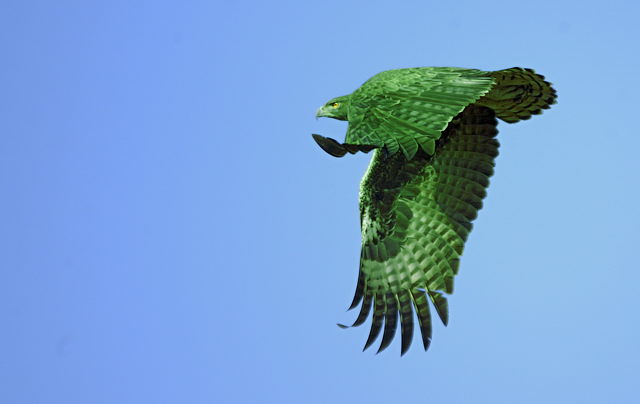

Dewi
What is the good of having a nice house without a decent planet to put it on? (H D Thoreau)
What is the good of having a nice house without a decent planet to put it on? (H D Thoreau)
Steppe Buzzard
149. Steppe Buzzard , Common Buzzard Buteo buteo vulpinus (Bruinjakkalsvoël)
ORDER ACCIPITRIFORMES. Family: Accipitridae
Steppe Buzzard is some times split as a separate species, B. vulpinus. Compared to the nominate form, it is slightly smaller (45–50 cm long), longer winged and longer tailed. There are two colour morphs: the rufous form which gives this subspecies its scientific name (vulpes is Latin for "fox"), and a dark grey form.
Description
Size: 45–50 cm. Dark eyes. The plumage varies from pale brown to almost black. Pale zone accross the breast (between striked upper breast and banded underparts). The flanks are usually conspicuously barred. Whitish secondary wing feathers.
Distribution: Breeds from eastern Europe to Siberia, heading south in the non-breeding season to southern Europe and sub-Saharan Africa. It occurs in all countries of southern Africa, but it is especially common in South Africa, Swaziland, Botswana and Zimbabwe.
Habitat
Open country, such as savanna, grassland and open woodland, often moving into mosaics of croplands.
Movements and migrations
Palearctic breeding migrant, leaving its breeding grounds in September and early October then heading south to southern Africa, arriving in the period from late October-November. It eventually departs from the region in late February and March.
Diet
Its diet in southern Africa is not well-known, but it is thought to consist mainly of insects and small mammals. It does most of its foraging from a prominent perch, such as a tree or telephone pole, dropping onto the ground once it spots prey.
Call
A gull-like pee-ooo.
Status
Common summer visitor; some overwinter.
ORDER ACCIPITRIFORMES. Family: Accipitridae
Steppe Buzzard is some times split as a separate species, B. vulpinus. Compared to the nominate form, it is slightly smaller (45–50 cm long), longer winged and longer tailed. There are two colour morphs: the rufous form which gives this subspecies its scientific name (vulpes is Latin for "fox"), and a dark grey form.
Description
Size: 45–50 cm. Dark eyes. The plumage varies from pale brown to almost black. Pale zone accross the breast (between striked upper breast and banded underparts). The flanks are usually conspicuously barred. Whitish secondary wing feathers.
Distribution: Breeds from eastern Europe to Siberia, heading south in the non-breeding season to southern Europe and sub-Saharan Africa. It occurs in all countries of southern Africa, but it is especially common in South Africa, Swaziland, Botswana and Zimbabwe.
Habitat
Open country, such as savanna, grassland and open woodland, often moving into mosaics of croplands.
Movements and migrations
Palearctic breeding migrant, leaving its breeding grounds in September and early October then heading south to southern Africa, arriving in the period from late October-November. It eventually departs from the region in late February and March.
Diet
Its diet in southern Africa is not well-known, but it is thought to consist mainly of insects and small mammals. It does most of its foraging from a prominent perch, such as a tree or telephone pole, dropping onto the ground once it spots prey.
Call
A gull-like pee-ooo.
Status
Common summer visitor; some overwinter.
PuMbAa
Please visit our website: www.photomaniacs.de
Please visit our website: www.photomaniacs.de
Steppe Buzzard Photos
149. Steppe Buzzard Buteo buteo vulpinus
 © Pumbaa
© Pumbaa
Kruger National Park
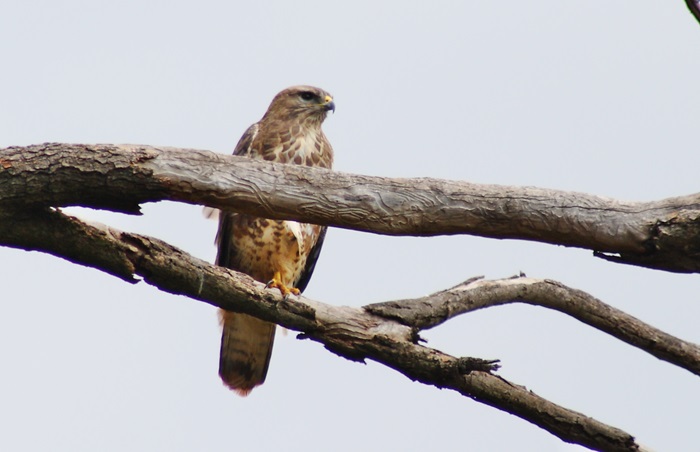 © Flutterby
© Flutterby
Rietvlei
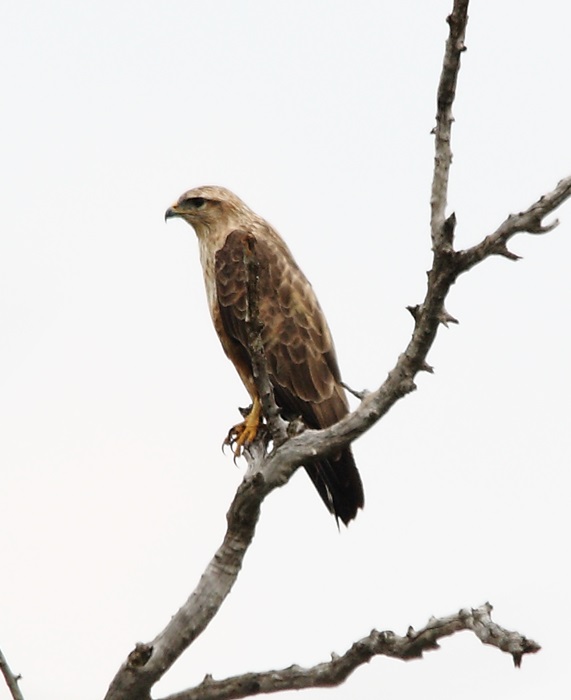 © Flutterby
© Flutterby
Kruger Park
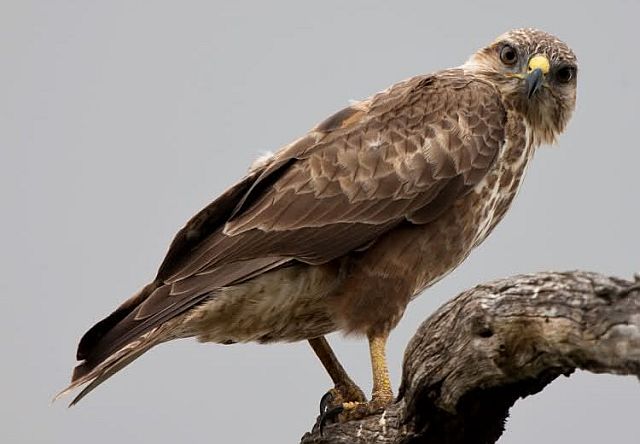
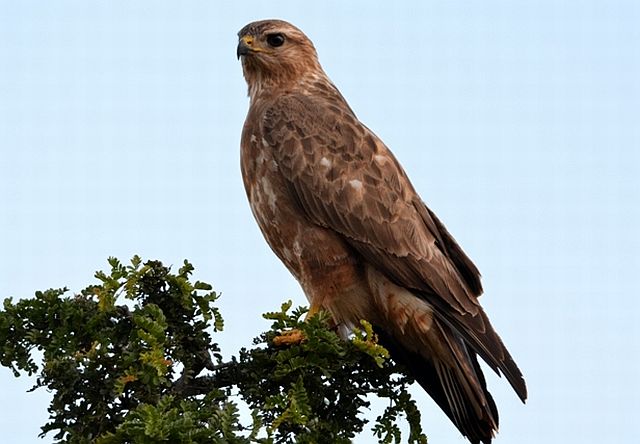 © Mel
© Mel
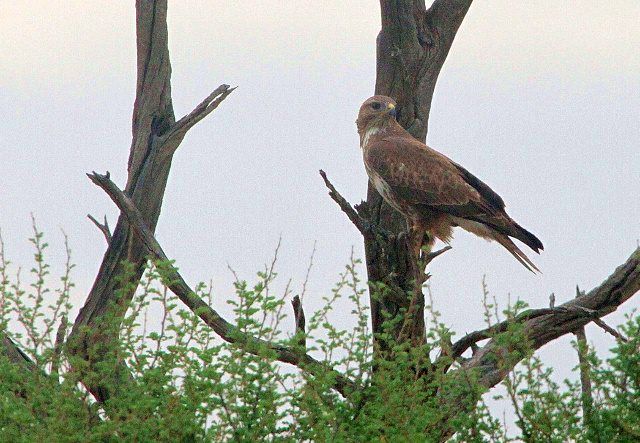 © nan
© nan
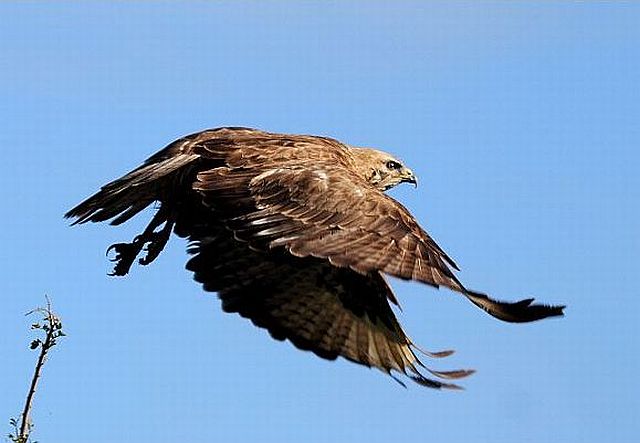 © Sharifa
© Sharifa
Addo Elephant National Park
 © Sprocky
© Sprocky
Juvenile
 © pooky
© pooky
Kgalagadi Transfrontier Park
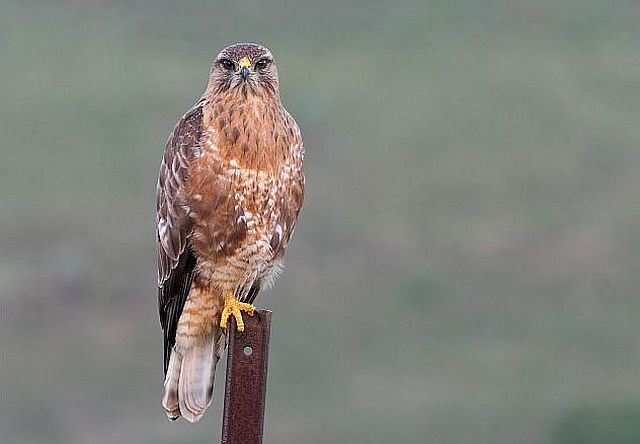 © Duke
© Duke
 © Duke
© Duke
Links:
http://sabap2.adu.org.za/docs/sabap1/149.pdf
http://sabap2.adu.org.za/spp_summary.ph ... §ion=3
 © Pumbaa
© PumbaaKruger National Park
 © Flutterby
© FlutterbyRietvlei
 © Flutterby
© FlutterbyKruger Park

 © Mel
© Mel © nan
© nan © Sharifa
© SharifaAddo Elephant National Park
 © Sprocky
© SprockyJuvenile
 © pooky
© pookyKgalagadi Transfrontier Park
 © Duke
© Duke © Duke
© DukeLinks:
http://sabap2.adu.org.za/docs/sabap1/149.pdf
http://sabap2.adu.org.za/spp_summary.ph ... §ion=3
PuMbAa
Please visit our website: www.photomaniacs.de
Please visit our website: www.photomaniacs.de


